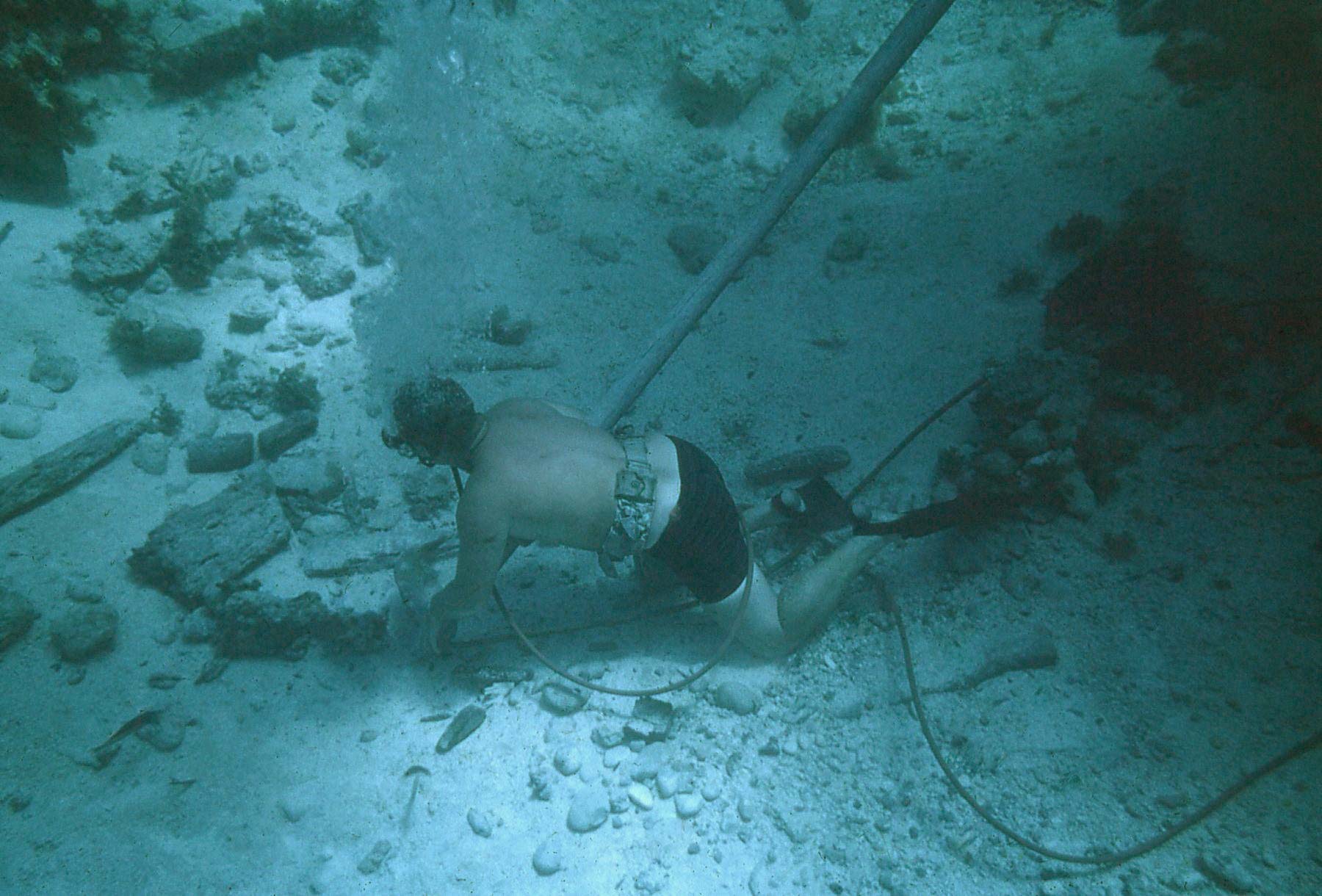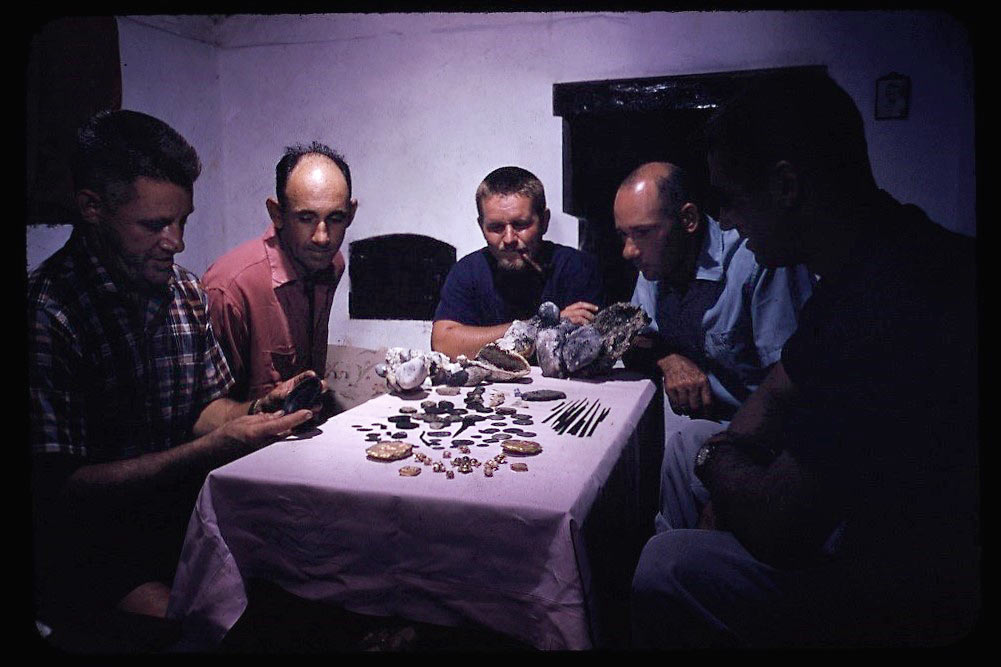The Tucker Cross
Gold Fleets
There were signs of old wrecks on the reefs. Fishermen occasioned upon cannons and ballast while setting their fish traps. The idea that the reef hid treasure wrecks was not a new one in Bermuda but few people had actively gone looking for them. The first step to hunting for treasure was taken in the imagination.
Teddy had read about the gold fleets transporting their treasures back to Spain and Portugal from the new world, a perilous journey taking them past Bermuda. It did not seem unreasonable to assume that some of the early wrecks lost to the island’s reefs might still hold items of intrinsic value.
'I was going to go look for treasure – there was no question about that. And then to make a living I bought an old boat and fixed it up – the ability to be out there on the ocean and looking in the reefs when the weather was suitable – and I started finding a lot of shipwrecks.
The contacts I had made with the local fishermen were soon to pay off in a big way in 1951. A fisherman approached me and told me about a pair of large marble columns he had seen embedded in the coral among the outer reefs. He offered to take me in his boat and show me the site…while crossing a small sand pocket in the coral, I saw what appeared to be the muzzle of a small cannon sticking out of the sand. We stopped the boat, I put on a facemask and flippers and dived down to thirty feet for a closer look. Sure enough, about one third of the length of a small cannon was visible, with the muzzle sticking out of the sand…'
The Wreck of the San Pedro
The next visit to the site was not until 1955. In early September with nothing better to do Teddy went back for another look.
'There was nothing up on the rocks, on the coral there was only a small portion of one of the guns showing. I figured if it had been another 25 or 30 years there wouldn’t have been anything visible – it would have been very hard to find'
‘No information existed on the procedures to follow in excavating a wreck site. At the time, the only person to have found a treasure ship was Art McKee. In 1938, he discovered a vessel that had been part of a Spanish treasure fleet and sank during a hurricane in the Florida Straits in 1733.’
Teddy started fanning sand from the reef to the east of the sand hole and after pieces of wood, porcelain and then what he thought might be coins started to emerge, he uncovered a small five sided gold cube with a stamp incised on one side.
‘This expedition was casting a different look on treasure hunting which, until now, had only been a dream or part of a fantasy world, that everyone talks about yet no one believes will ever become a reality.”
‘From that moment on my mild interest in treasure hunting changed’
Bitten by the bug and desperate to explore Teddy and the team were repeatedly restricted by the weather.
Returning to the site whenever the unsettled weather permitted and working carefully they scoured the sand hole – over six separate visits to the site he recovered gold and pearl buttons, coins, gold ingots and a 36 oz gold bar.
In late September they returned for the seventh day, which happened to be a Sunday. With the weather scheduled to get worse Teddy was eager to work faster.
'There was a big plank of some part of the ship, probably a hull plank or something. Just lifted it up and slid it away – and there was the cross face down under it. And it was bright gold, I knew it was gold, I’d found gold before and seen a bit of it. Picked it up, turned it up, Emeralds!'
'And I knew they weren’t glass – if it had been glass it would have frosted – glass oxidizes. And these things were… talk about the green fire, they had it. It looked like it had just been put there – that somebody had taken it, put it down there, pointed to it and pick it up.
Awestruck, I counted the large green emeralds on the face of the cross. There were seven of them, each the size of a musket ball. Tiny gold nails hung from small rings on arms of the cross, these presumably representing the nail’s in Christ’s hands…The carving, though beautiful, was somewhat crude, indicating that the cross was the work of local artisans rather than having been made by craftsmen brought over from Spain. To this day the cross remains my most treasured discovery.'
'I think we showed it to my parents and then we just put in a closet somewhere – I don’t know maybe underneath the frying pan – nobody was particularly interested – they all thought that we were out there treasure hunting spending all that time in the ocean with sharks and eels and stuff that we must be a bit flakey anyhow.
I figured it was one of the better pieces I’d found. I had no idea of the religious significance or the value or what it would do to the public seeing it….'





